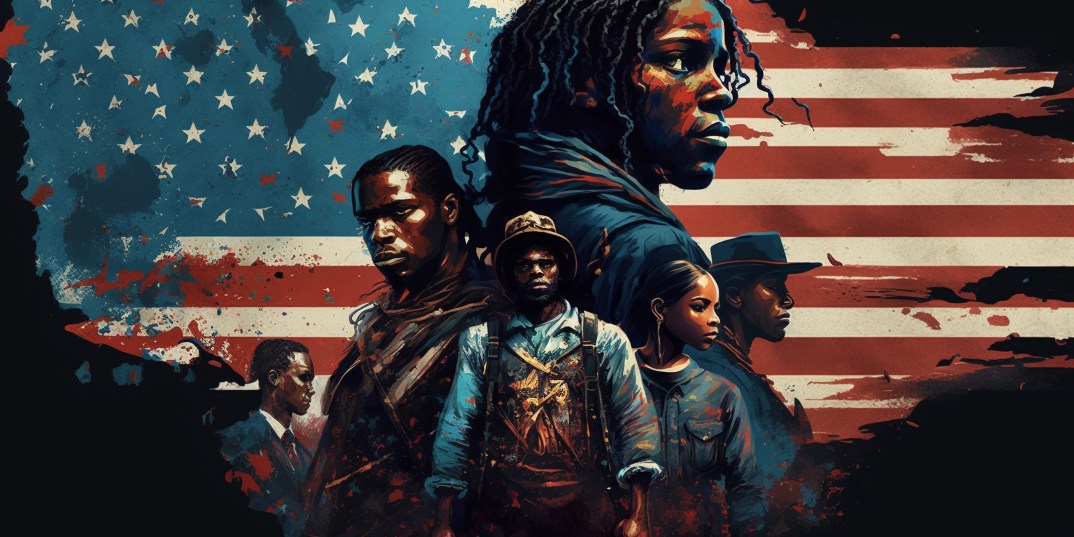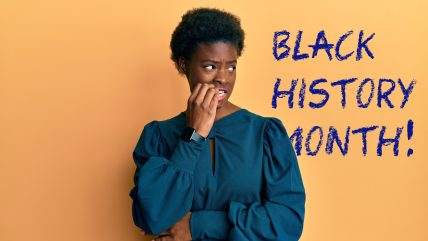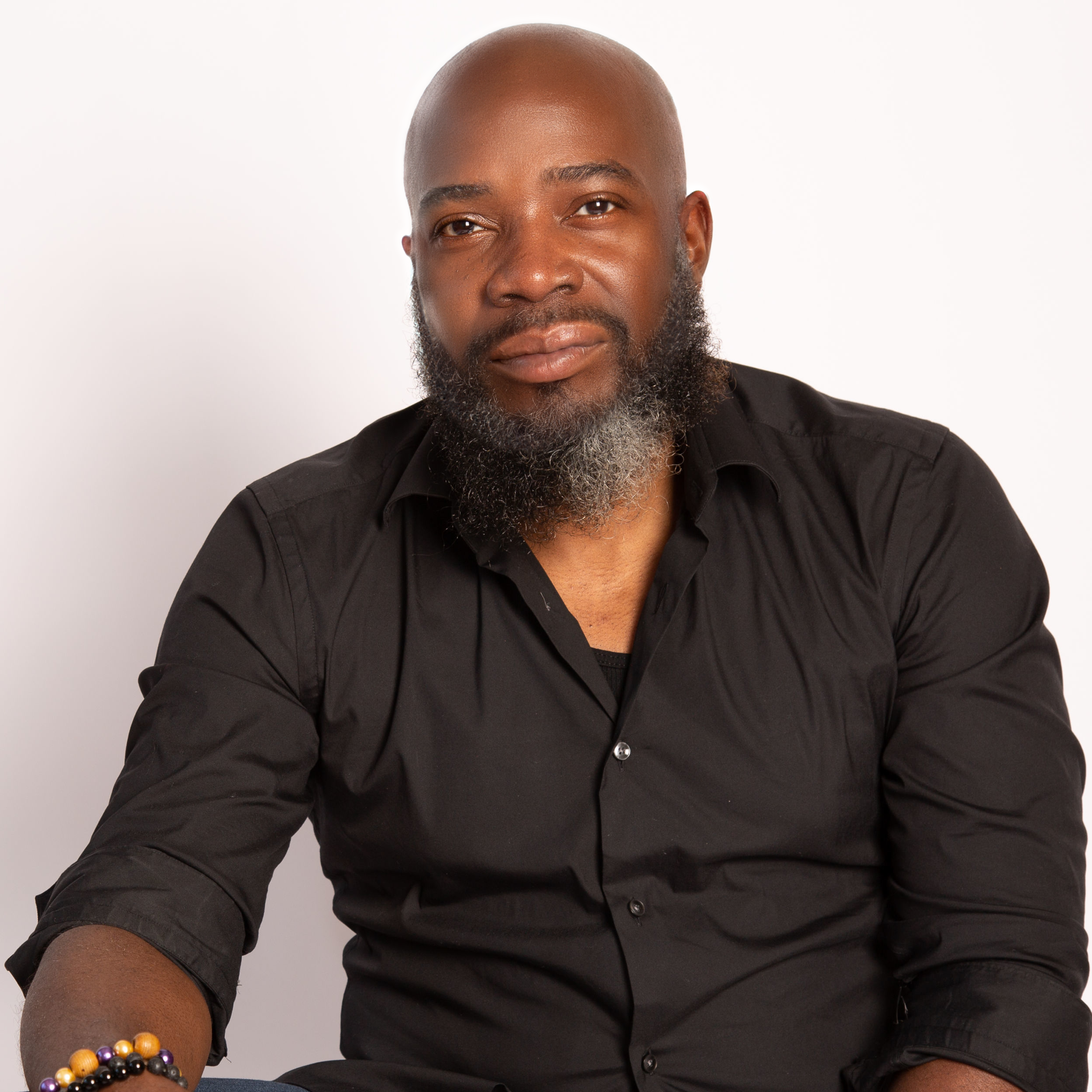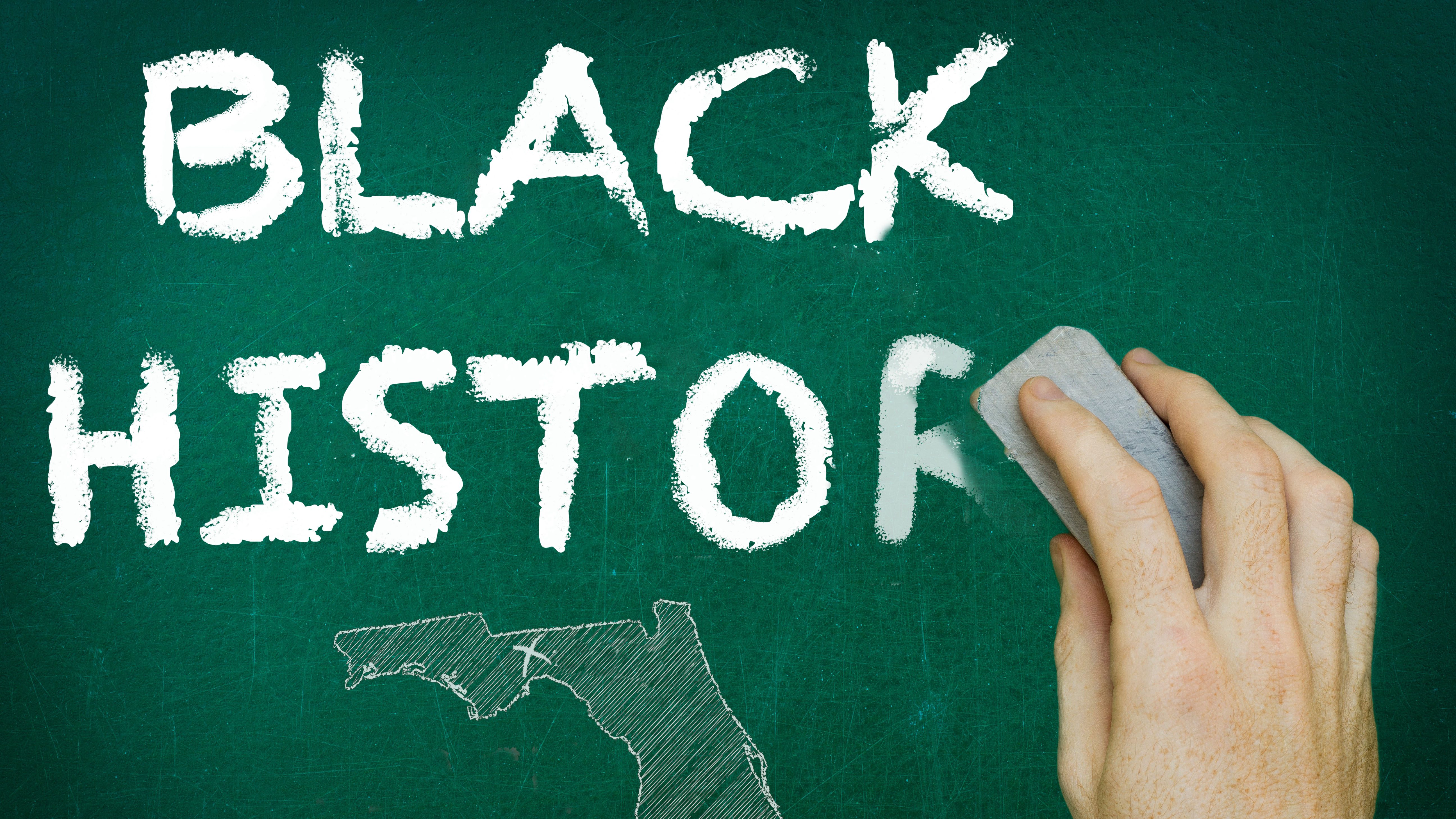Black History/White Lies: The 10 biggest myths about slavery
OPINION: Part one of theGrio’s Black History Month series explores the myths, misunderstandings and mischaracterizations of America’s slaveholding past.

Editor’s note: The following article is an op-ed, and the views expressed are the author’s own. Read more opinions on theGrio.
Because theGrio celebrates the legacy and the past of African America 364 days a year (to appease Ron DeSantis, we take a day off to celebrate white history), it’s always a difficult proposition to find new ways to celebrate Black History Month.
This year, instead of presenting interesting-but-meaningless nuggets of trivia like the first man to slit a piece of fried baloney (Levester Jermaine Robinson in 1823), we decided to explore some of the misconceptions, myths and misunderstandings that created some of the popular, almost true narratives that many people believe.
Here are the 10 biggest myths about slavery.
10. Slavery existed in every society.
I’m sure you’ve heard this one. It is one of the principles in Prager University’s ultra-conservative, pro-white version of American history. Depending on the time and geography, indentured servants, women in arranged marriages, child laborers and prisoners of war were described as “slaves.” While it is true that varying forms of human subjugation, bondage and servitude have existed since time immemorial, there are distinct features unique to America’s human trafficking enterprise:
- It was race-based: This was not the case in ancient Europe, nor was it true in the Caribbean and Latin American New World colonies.
- It was constitutionally protected: Slavery wasn’t just embedded into the foundational document of the nation, even states that rejected the institution were legally required to enforce precepts.
- It reduced human beings to property: In Federalist Paper No. 54, one of the esteemed Founding Fathers notes that the Constitution views the enslaved “in the mixed character of persons and of property. This is in fact their true character.”
- It was inescapable: Not only was it intergenerational and perpetually inheritable, but white people controlled the only legal path to freedom.
While other societies may have included some of these components, America was the only place that had all of the qualities that typify the institution that we refer to as “slavery.” To be fair, saying “race-based, constitutional, inescapable human trafficking system that reduced human beings to chattel using violence or the threat of violence to extract labor and intellectual property” is probably more accurate.
It’s just easier to just call it slavery.
9. Africans sold slaves.
Well … kinda
The first African enslaved by Nuno Tristão and Antão Gonçalves — the Portuguese explorers credited with starting the African slave trade as we know it — was kidnapped by force. Most of the subsequent victims of the enterprise were already prisoners of war captured during intertribal conflicts. Portugal’s Casa da Guiné and the East India Company were the first of many state-run European corporations formed to ensure West Africa’s and Europe’s economic dependence on the institution. And yes, as European corporations used coercion, duplicity and force by introducing capitalism and weapons into the fray, Africans willingly participated. Still, “sold” is an inadequate word to characterize African participation in the slave trade.

The 10 Black History Month Commandments
Africans could not have conceived of what awaited the victims of this brand-new enterprise. In Africa, POWs were not considered property, were not perpetually enslaved and could earn a path to freedom. Still, nearly all of the slaves sold in Africa were resold by whites once they made it to the New World. Their children, grandchildren and subsequent progeny born in the Americas were sold by white Americans. According to the U.S. Census Bureau, more than 30% of human imports in colonial America were trafficked from the Caribbean, where generations of Africans had been enslaved for centuries.
So, yes, Africans sold slaves. However, African participation in the trans-Atlantic slave trade represents a tiny part of the human trafficking economy. Only 388,000 of the approximately 10 million human beings enslaved in North America were born in Africa.
Most importantly, none of that happened until white people showed up.
8. Black people owned slaves.
A Black American slaveowner was an extremely rare thing.
According to a study by Black historian Carter G. Woodson, 3,777 free Black people owned 12,907 slaves in 1830 — about one-half of 1% of the two million people enslaved in America. And because Black people had no legal rights in many states, many of those people were slaveowners in name only. Some of them had purchased their kin. Others technically owned themselves after buying their freedom. And, as Woodson notes:
“The census records show that the majority of the Negro owners of slaves were such from the point of view of philanthropy. In many instances, the husband purchased the wife, or vice versa … Slaves of Negroes were in some cases, the children of a free father who had purchased his wife. If he did not thereafter emancipate the mother, as so many such husbands failed to do, his own children were born his slaves and were thus reported.”
To be fair, white people weren’t the only culprits. Native Americans enslaved African Americans at rates that often mirrored white Southerners. In fact, when the 13th Amendment abolished slavery, indigenous Americans in “Indian Territory” continued the practice until separate treaties were signed by what we call the “five civilized tribes.”
7. Most white people weren’t enslavers.
Again, this depends on how you look at it. While only 25% of white Southerners technically owned slaves, that number doesn’t reflect the sons, daughters and families of slaveowners. It doesn’t count the people who worked in the slave trade, the non-slaveowners who worked as overseers or the people who used slave labor. Are you a “car owner” if you drive your parent’s old car every day? Should the wife or children of a slave owner be considered an “enslaver”? What if you inherit your parents’ chattel?
The profits from human trafficking trickled down to every part of American society. Northerners could buy cheap clothing because of cheap cotton prices. Free labor increased earnings for farmers and manufacturers. Enslavers rented out their human chattel to merchants, builders and business owners. Insurance companies, banks and financial markets were backed by enslaved bodies. Churches and schools benefitted from their involvement in the slave trade.
Almost every free person in America benefitted from living in a slave economy. Historian David Blight notes that “by 1860, there were more millionaires (slaveholders all) living in the lower Mississippi Valley than anywhere else in the United States. In the same year, the nearly 4 million American slaves were worth some $3.5 billion, making them the largest single financial asset in the entire U.S. economy, worth more than all manufacturing and railroads combined.”
Slavery was the American economy.
6. The myth of “free states.”
A Black person could not be free in a slaveholding society.
Even in non-slaveholding states, free Black people were often kidnapped, lured or forced into slavery. Some were wrongfully enslaved from birth like Jenny Slew, who won her freedom via lawsuits. But in states like Georgia, the burden of proof was on the enslaved person and, in others, Black people could not represent themselves in court — even before the Supreme Court ruled that Black people had “no rights which the white man was bound to respect.”
In non-slaveholding states, Black Americans were still relegated to second-class citizenship. In the 1800s, Pennsylvania and New Jersey changed their constitutions to rescind voting rights for all Black citizens, free or enslaved. New York required Blacks — and only Blacks — to own property before they could vote. And, of course, every state was required to comply with fugitive slave laws.
As Fannie Lou Hamer said: “Nobody’s free until everybody’s free.”
5. Slaves were forbidden to read.
While there were places where slaves were forbidden from reading and writing, South Carolina’s Negro Act of 1740 — the law on which most slave codes were based — only forbade slaves from writing. Enslaved people were even given pro-white redacted versions of the Bible and even served as entrepreneurs and bookkeepers. Yes, literate slaves were definitely considered a threat because all Black people were considered a threat.
And, because white people have the privilege of enforcing laws as they see fit, they rarely enforced the prohibition against reading until they needed to demonstrate their might.
4. There were “good” slavemasters and happy slaves.
Men like Thomas Jefferson may not have wielded the whip, but he employed proxies who used physical and psychological torture to uphold the institution. Ona Judge didn’t run away from George Washington’s Philadelphia home because he was a brutal master. Still, Washington’s three-year quest to re-enslave her was an act of cruelty. Slavemasters may not have written the rules, but they dispatched slavecatchers and employed slave supervisors to enforce them.
Withholding someone’s God-given right to freedom and liberty is evil. It is also important to distinguish between “happy slaves” and slaves who told white people they were happy. After escaping the plantation of the man who enslaved and impregnated her, Harriet Jacobs ran away. For years, she lived in a swamp by day and a tiny attic crawl space during the night. Even though a Kentucky history textbook teaches that “masters encouraged their chattels to engage in recreational activities, such as dancing and singing, that provided emotional release” because “happy slaves worked better than did discontented ones,” Margaret Garner killed her child because she didn’t want the child to grow up on a Kentucky plantation.
The institution of slavery is inherently violent.
3. White people fought to end slavery.
That never happened.
First of all, the Civil War wasn’t fought to end slavery. The Civil War didn’t even end slavery, the 13th Amendment did. Plus, it was passed by Congress before the end of the Civil War. Ending the institution wasn’t the goal of Union Commander-in-Chief Abraham Lincoln, who said: “My paramount object in this struggle is to save the Union, and is not either to save or to destroy slavery.” There isn’t any evidence that a significant number of anti-slavery white men enlisted to fight in the war.
Ending slavery was a consequence of the Civil War. Saying white people gave their lives to end slavery is like saying slaves donated their labor to enrich white people.
2. Slaves labored on plantations.
The portrait of Black people toiling away on Southern plantations doesn’t accurately portray the “peculiar institution” of race-based involuntary servitude.
Millions of enslaved Africans lived in urban areas like Charleston, Savannah and Richmond, where Black residents often outnumbered whites. Even the enslaved people in rural areas didn’t often work on large plantations. In 1860, 54% of slaveowners owned less than six enslaved people, many of whom worked as domestic servants, trained artisans and industrial laborers.
More importantly, slaves were not just used for labor. The white aristocrats who initially invaded America didn’t know about farming, hunting or building a new nation. Enslaved engineers and horticulturalists built the homes and engineered the aqueducts and dams that created the rice industry in South Carolina. African blacksmiths taught Americans how to forge iron and steel. They taught medicine and science, served as accountants and taught their sometimes incompetent owners how to do things.
What was stolen during slavery was much more than labor.
1. How slaves gained their freedom.
Most people assumed that there were three paths to freedom for enslaved people:
- Manumission or the act of formally freeing a slave
- The Underground Railroad
- Slave revolts
First of all, white people almost never freed their slaves. In 1850, “less than one-twentieth of one percent” of America’s entire slave population were manumitted — partly because freeing a slave was illegal in many states. Even the enslaved who were technically manumitted had actually emancipated themselves by purchasing their freedom.
Although hundreds of thousands of enslaved people successfully gained freedom by escaping the institution, most did not utilize the loose network as safehouses, routes and conductors known as the Underground Railroad. Many had no idea it even existed. Others didn’t trust the whites who were involved. Many escapees didn’t know the laws and geographic boundaries that separated free states from slave states. Instead of trying to reach Canada or a Northern state, many lived in maroon villages and Caucasian-free zones like North Carolina’s Great Dismal Swamp, Louisiana’s Bas de Fleuve or Hal’s Kingdom in Alabama.
And, while the notion of slaves grabbing machetes is exciting, stories of revolts often went untold because whites feared that their human property could be inspired by successful uprisings. We’ll never truly know how frequently rebellions took place. Plus, most rebellions took place before enslaved people reached America, including 485 documented insurrections aboard slave ships transporting Africans. Other acts of rebellion — like the frequently used tactic of setting everything on fire — were considered individual acts. Many were never documented because no one ever found out about them.

Michael Harriot is an economist, cultural critic and championship-level Spades player. His New York Times bestseller Black AF History: The Unwhitewashed Story of America is available everywhere books are sold.
Never miss a beat: Get our daily stories straight to your inbox with theGrio’s newsletter.


